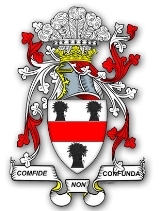
Tyndall
Overview
Tynedale
Tynedale was a local government district in south-west Northumberland, England. It had a resident population of 58,808 according to the 2001 Census, and was named after the River Tyne . Its main towns were Hexham, Haltwhistle and Prudhoe...
, or the valley of the Tyne
River Tyne
The River Tyne is a river in North East England in Great Britain. It is formed by the confluence of two rivers: the North Tyne and the South Tyne. These two rivers converge at Warden Rock near Hexham in Northumberland at a place dubbed 'The Meeting of the Waters'.The North Tyne rises on the...
, in Northumberland
Northumberland
Northumberland is the northernmost ceremonial county and a unitary district in North East England. For Eurostat purposes Northumberland is a NUTS 3 region and is one of three boroughs or unitary districts that comprise the "Northumberland and Tyne and Wear" NUTS 2 region...
. With origins in the ancient Anglo Saxon nobility of Northumbria, the Royal Scottish House of Dunkeld
House of Dunkeld
The so-called House of Dunkeld, in Scottish Gaelic Dùn Chailleann , is a historiographical and genealogical construct to illustrate the clear succession of Scottish kings from 1034 to 1040 and from 1058 to 1290.It is dynastically sort of a continuation to Cenél nGabráin of Dál Riata, "race of...
and the Anglo-Norman nobility, they have contributed courtiers, judges, writers, historians, sailors, airmen, scientists and philosophers to the history of England
England
England is a country that is part of the United Kingdom. It shares land borders with Scotland to the north and Wales to the west; the Irish Sea is to the north west, the Celtic Sea to the south west, with the North Sea to the east and the English Channel to the south separating it from continental...
, Ireland
Ireland
Ireland is an island to the northwest of continental Europe. It is the third-largest island in Europe and the twentieth-largest island on Earth...
and the new world.
Unanswered Questions

